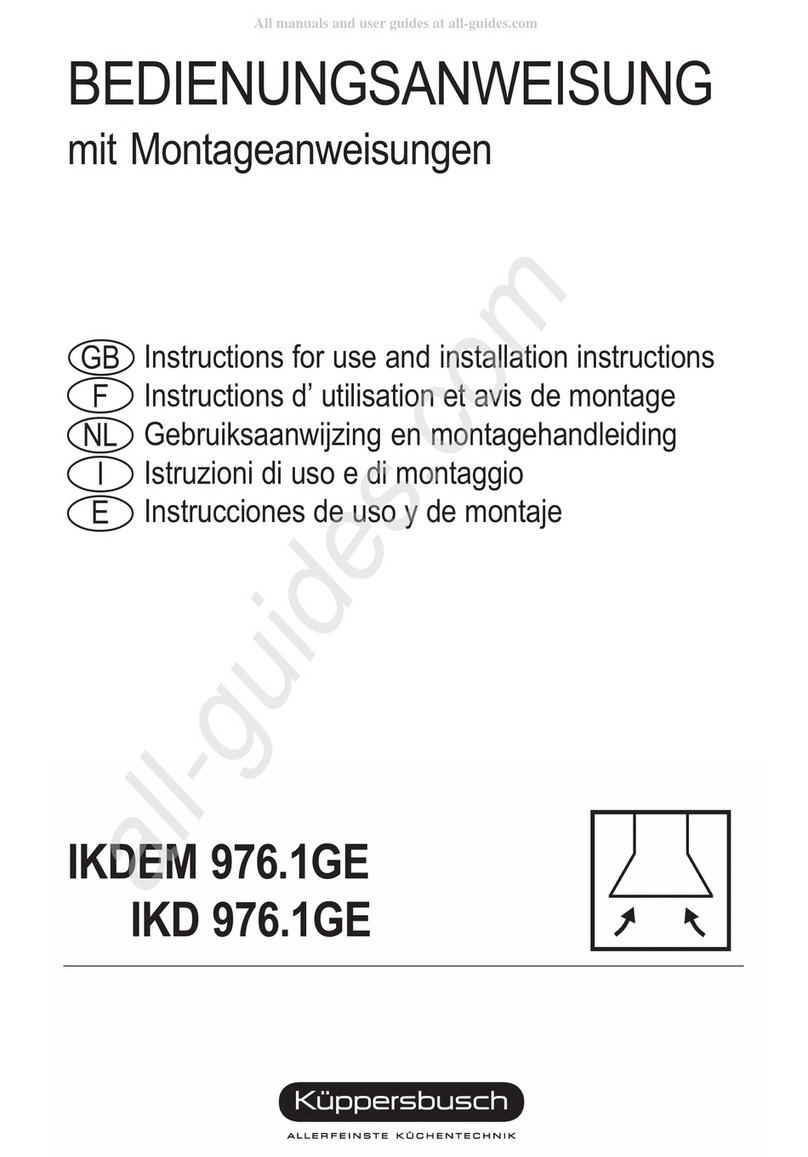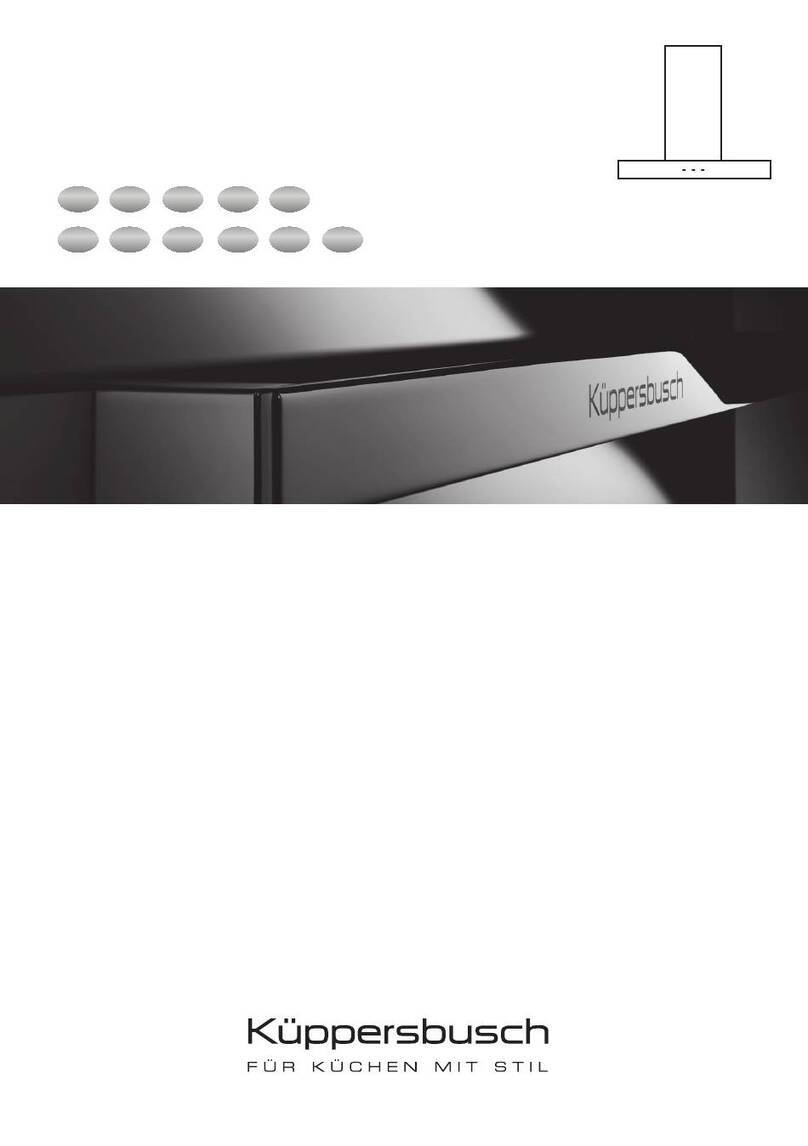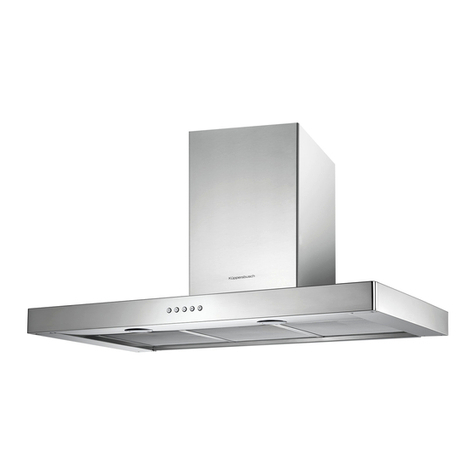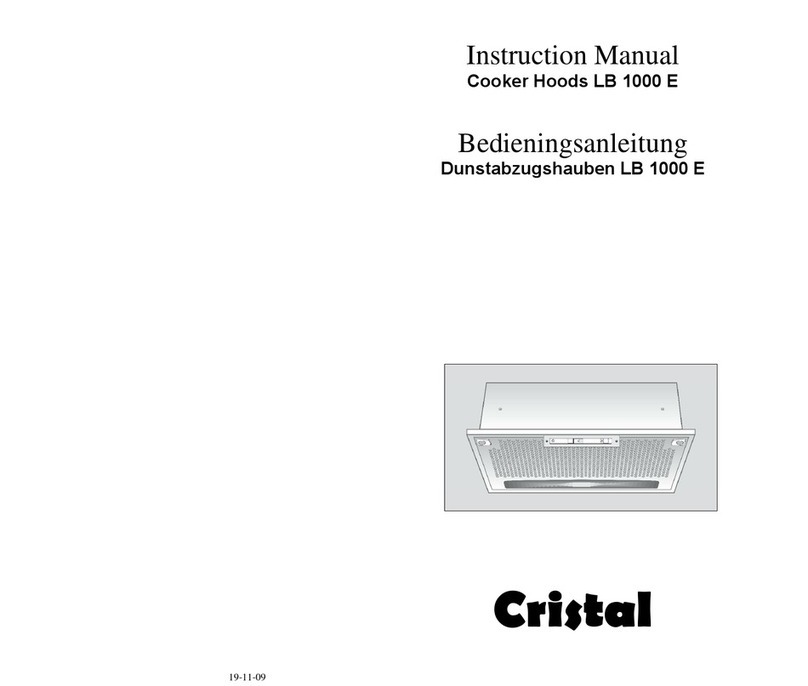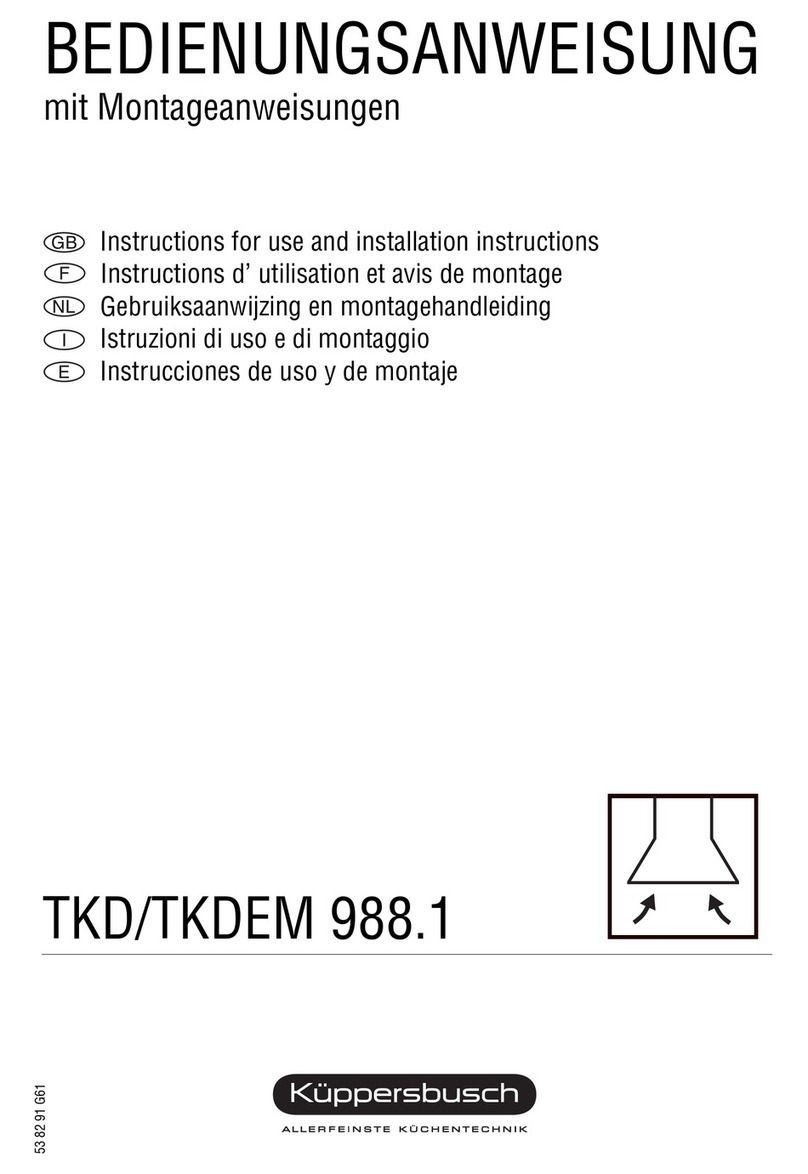
wall: use the supplied metal bracket (B) and the screws and plugs supplied with the panel.
Mount the plates of the electrical system fixing it with 3 screws and 2 metal washers (Fig. 6).
Securingthe extension flues:
Basic installation requirements: – Set the electrical power supply within the space covered by the decorative flues.
– If your unit is installed in an Exhaust hood, prepare the air exhaust hole.
When installing exhaust hoods,to achieve thebest possible conditions usean airexhaust pipe that :is as shortas possible,
has a minimum of curves (maximum angle: 90°), is made of a material that complies with the standards (which vary from
nation to nation) and iv) is smooth on the inside. It is also advisable to avoid any drastic changes in pipe section (diameter:
150mm).
Adjust the width of the 2 extension flue support bracket (W) using screws A indicated in Fig. 7. Then use the plugs and
screws provided to secure it to the ceiling. Make certain it is aligned with the hood. For filtering hoods, the air exhaust
grids are positioned in the upper part (Fig. 8). For exhaust hoods, turn the upper flues over so that the air exhaust grid
is in the lower section (Fig. 9).
Exhaust hoods: Connect the hood flanges to the exhaust hole in the wall/ceiling using 2 flexible pipes. Plug in the hood.
Insert the extension pipes setting them on the hood; extend the upper pipes to the ceiling and secure with the 4 screws
(G) - Fig.10.
Filtering hood: Secure the deflectors to the upper flues using the 8 special screws (provided) – Fig.11; hook up the
flexible pipe (diameter: 125) to the deflectors. Install the reductions (provided) on the hood air outlet point (Fig. 12). Take
the assembled extension flues and set them on the hood; extend the upper flues to the ceiling and secure with the 4
screws (G) - Fig. 10. Extend the lower flues taping them in place and then connect the flexible pipes to the hood
reduction. Plug in the hood. Extend the lower flue downward setting it against the hood. Install the charcoal filter by
pressing the 2 tabs on the filter down into the special housing (Fig. 13) and rotating them upward.
OPERATION
Controls(Fig. 14):
AUTOMATIC OPERATION WITH SENSOR:
Key A: switches the lights on/off. Key B: enables/disables “Automatic” function. When this function is selected,
an “A” appears on the display C, and the speed of the motor increases or decreases depending on the smoke,
odours and gas present in the kitchen. Display C: - indicates the automatic operation of the sensor (the letter
“A” appears);- indicates the motor speed selected automatically by the sensor; indicates the FILTER ALARM
whenever the central segment is illuminated or flashing. Key D: decreases motor speed / Reset; decreases
motor speed to zero (stopping); in any case however, after approximately 1 minute, the hood resumes automatic
operation at the speed set by the sensor. Whenever the key is pressed during the display of FILTER ALARM,
a RESET occurs, and the counting of the hours resumes again. Key E: increases motor speed; in any case
however, after approximately 1 minute, the hood resumes automatic operation at the speed set by the sensor.
Modification of sensor sensitivity: sensor sensitivity can be modified by operating as follows:
- stop the hood by pressing key B. – Simultaneously press keys D and E (the sensor’s sensitivity index will
appear on the display) - Pressing keys D or E, the sensor’s sensitivity will either increase or decrease (1
: minimum sensitivity / 9: maximum sensitivity). – whenever the power supply is interrupted, the sensor will
resume operation with a sensitivity index of 5.
Warning: in order to avoid damaging the sensor, never use silicone products near the hood!
OPERATION AS TRADITIONAL HOOD:
Key A: switches the lights on/off. Display C: - indicates the motor speed selected (from 1 to 4); - indicates
the operation of the Timer when the number is flashing; - indicates filter alarms whenever the central segment
is illuminated or flashing. Key D: decreases motor speed / Stop / Reset; decreases motor speed to zero
(stopping). Whenever the key is pressing during filter alarm display, a RESET occurs, and the counting of the
hours resumes again. Key E: enables the motor / increases motor speed /TIMER. Pressing this key starts
the motor (at the latest speed set); pressing the key again increases motor speed, while keeping the key pressed
down for a few seconds enables the TIMER, and 5 minutes later the motor will stop (while the number of speed
setting selected will simultaneously begin flashing on the display); the Timer will remain enabled if motor speed
is changed. In order to disable the Timer, press the key again.
Grease Filters: special care must be given to the grease filters, which require regular cleaning. The hood indicates
the moment when the grease filters must be cleaned (after approx. 30 hours of operation) by showing the “Ffilter Alarm”
message. Clean these filters as required by use every two months on the average. To remove the filters: press inward
on the clamps at the handles and pull the filter downward (Fig. 3). Wash out the filter using a neutral soap.
Charcoal filters: whenever the unit is supplied with charcoal filters, these filters must be regularly replaced. The
hood indicates the moment when the charcoal filters must be replaced (after approx. 120 hours of operation) by showing
the “Filters Alarm” message. Replace these charcoal filters as required by use every 6 months on the average. Replacing
the charcoal filters: to remove them press inward on the clamp (Fig. 13) and rotate the filter downward until the 2 tabs
can be removed from the housing.
Lighting: Fig. 15: to remove the halogen lamps, turn the locknut counter-clockwise. Replace with the same type of
lamp.





